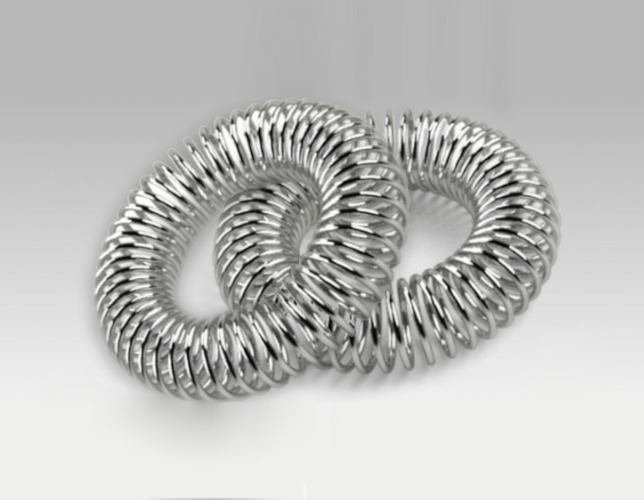Canted coil springs, particularly the FlexForce™ springs by Advanced EMC Technologies, represent a versatile and innovative solution across various industries. Originally designed as energizers for Teflon seals, these springs have evolved to meet a wide range of applications. Let’s dive into some specific use cases that demonstrate the unique capabilities and benefits of FlexForce™ canted coil springs.
1. Medical Devices

Key Benefits:
- Precise insertion and removal forces
- Reliable electrical connectivity
- Easy cleaning for ultra-clean environments
The medical field demands precision, reliability, and cleanliness in its components, and FlexForce™ springs are up to the task. These springs are commonly used in both implanted and non-implanted medical devices for connecting, latching, and holding components. The ability to specify insertion and removal forces makes them ideal for applications where secure and repeatable connections are critical. Additionally, their suitability for ultra-clean environments ensures they meet the stringent standards required for orthopedic and surgical devices.
Canted Coil Springs: Benefits for Medical Applications
2. Oil and Gas Industry
In the challenging conditions of oilfield applications, FlexForce™ springs provide robust solutions. These springs are designed to withstand the harsh pressures, temperatures, and chemical environments encountered in downhole tools used in fracking and other oil and gas operations. Their ability to maintain mechanical and electrical connections under extreme conditions makes them invaluable in this industry.

Key Benefits:
- Resistance to pressure and temperature
- Chemical compatibility with aggressive fluids
- Reliable connections in downhole tools
3. Automotive Applications

Key Benefits:
- Lightweight design
- Multifunctional use (locking, holding, conducting)
- Simplification of complex assemblies
The automotive industry, particularly in the realm of electric and hybrid vehicles, benefits from the lightweight and multifunctional design of FlexForce™ canted coil springs. These springs are used in various components to provide mechanical locking, holding, and electrical conductivity. By integrating these functions into a single component, engineers can reduce the weight and complexity of automotive assemblies, which is crucial for improving vehicle efficiency and performance.
4. Aerospace and Defense
Aerospace and defense applications require components that can perform reliably under extreme conditions, and FlexForce™ springs deliver just that. These springs are used for both mechanical connections and protection against electromagnetic interference (EMI/RFI). The ability to conduct electricity while also serving as a locking or connecting mechanism is particularly valuable in this sector, where reducing weight and ensuring reliability are top priorities.

Key Benefits:
- EMI/RFI shielding capabilities
- Dual functionality (mechanical and electrical)
- Suitable for harsh environments
Canted Coil Springs for EFI/RFI Shielding Applications
5. Semiconductor and Electronics

Key Benefits:
- High electrical conductivity
- Multiple plating options (gold, silver, nickel)
- Reliable contact points for electronic connections
In the semiconductor and electronics industries, FlexForce™ springs are utilized for their electrical conductivity and precise mechanical performance. These springs are available with gold, silver, and nickel plating, making them ideal for applications that require highly conductive materials and reliable connections. Their small coil size and independent coils provide the necessary contact points for critical electronic components.
Polymer Seals and Bearings for the Semiconductor Industry
Conclusion
The versatility of FlexForce™ canted coil springs by Advanced EMC Technologies makes them an excellent choice for a wide range of industries. From medical devices to automotive and aerospace applications, these springs offer a unique combination of mechanical and electrical capabilities that meet the demanding needs of modern engineering. Whether it’s providing reliable connections under extreme conditions or ensuring precise insertion and removal forces, FlexForce™ springs are engineered to deliver superior performance across the board.
For more information on how FlexForce™ canted coil springs can benefit your specific application, visit Advanced EMC Technologies or contact their team of experts.


